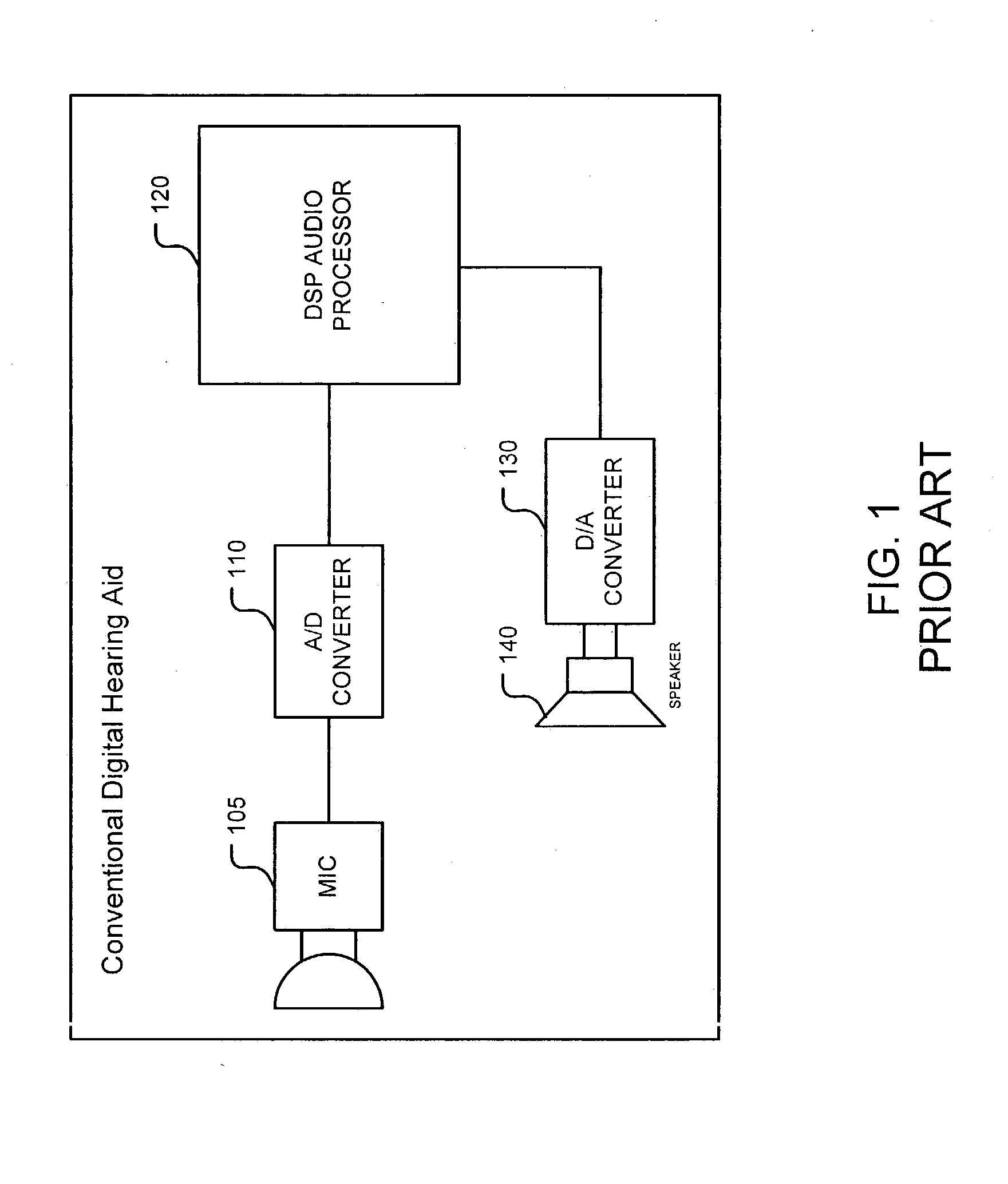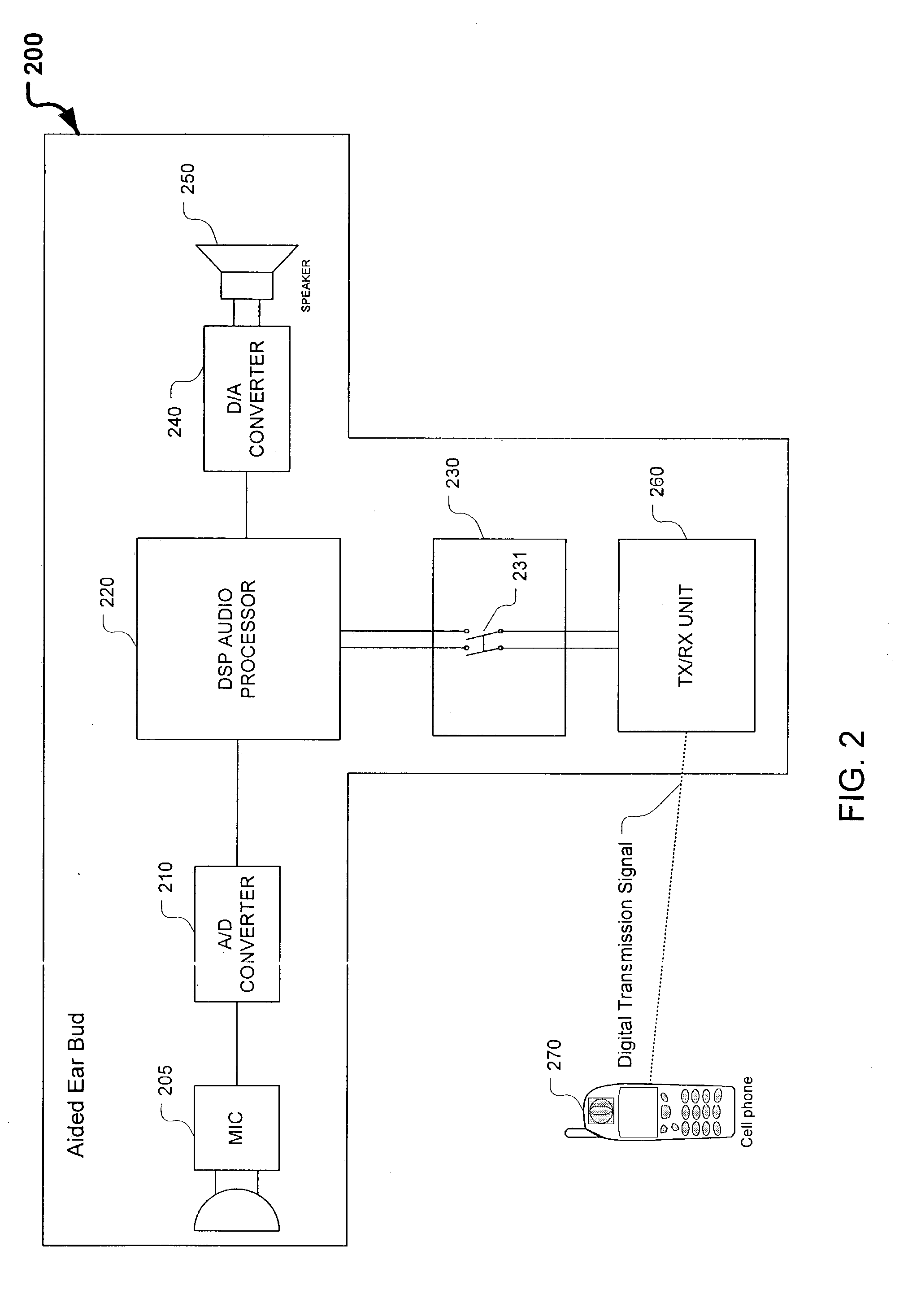Aided ear bud
a technology of ear bud and earphone, which is applied in the direction of deaf-aid sets, electrical equipment, and selection/mixing of electronic input, etc., can solve the problems of difficulty in effective wireless phone use for hearing-impaired device wearers, interference of hearing aid users, and difficulty in using wireless phone handsets for hearing-impaired device users
- Summary
- Abstract
- Description
- Claims
- Application Information
AI Technical Summary
Problems solved by technology
Method used
Image
Examples
Embodiment Construction
[0026] The exemplary embodiments of the systems and methods according to this invention provide a method for adapting a hearing aid so that the hearing aid is able to function as an ear bud device i.e., an aided ear bud. The exemplary embodiments also provide a system that interprets incoming signals to determine in which operating mode the aided ear bud should operate. In the exemplary embodiments, the incoming signal can be digital or analog depending on the transmitting source.
[0027] FIG. 1 illustrates a conventional digital hearing aid. The conventional hearing aid comprises a microphone 105, an A / D converter 110, a digital signal audio processor (DSP) 120, a D / A converter 130 and a speaker 140. In operation, sounds, represented by an analog signal and / or ambient noise emitted from an outside source, is captured by the microphone 105 and converted to a digital signal by the A / D converter 110. The DSP 120 manipulates the converted signal in accordance with well-known techniques a...
PUM
 Login to View More
Login to View More Abstract
Description
Claims
Application Information
 Login to View More
Login to View More - R&D
- Intellectual Property
- Life Sciences
- Materials
- Tech Scout
- Unparalleled Data Quality
- Higher Quality Content
- 60% Fewer Hallucinations
Browse by: Latest US Patents, China's latest patents, Technical Efficacy Thesaurus, Application Domain, Technology Topic, Popular Technical Reports.
© 2025 PatSnap. All rights reserved.Legal|Privacy policy|Modern Slavery Act Transparency Statement|Sitemap|About US| Contact US: help@patsnap.com



